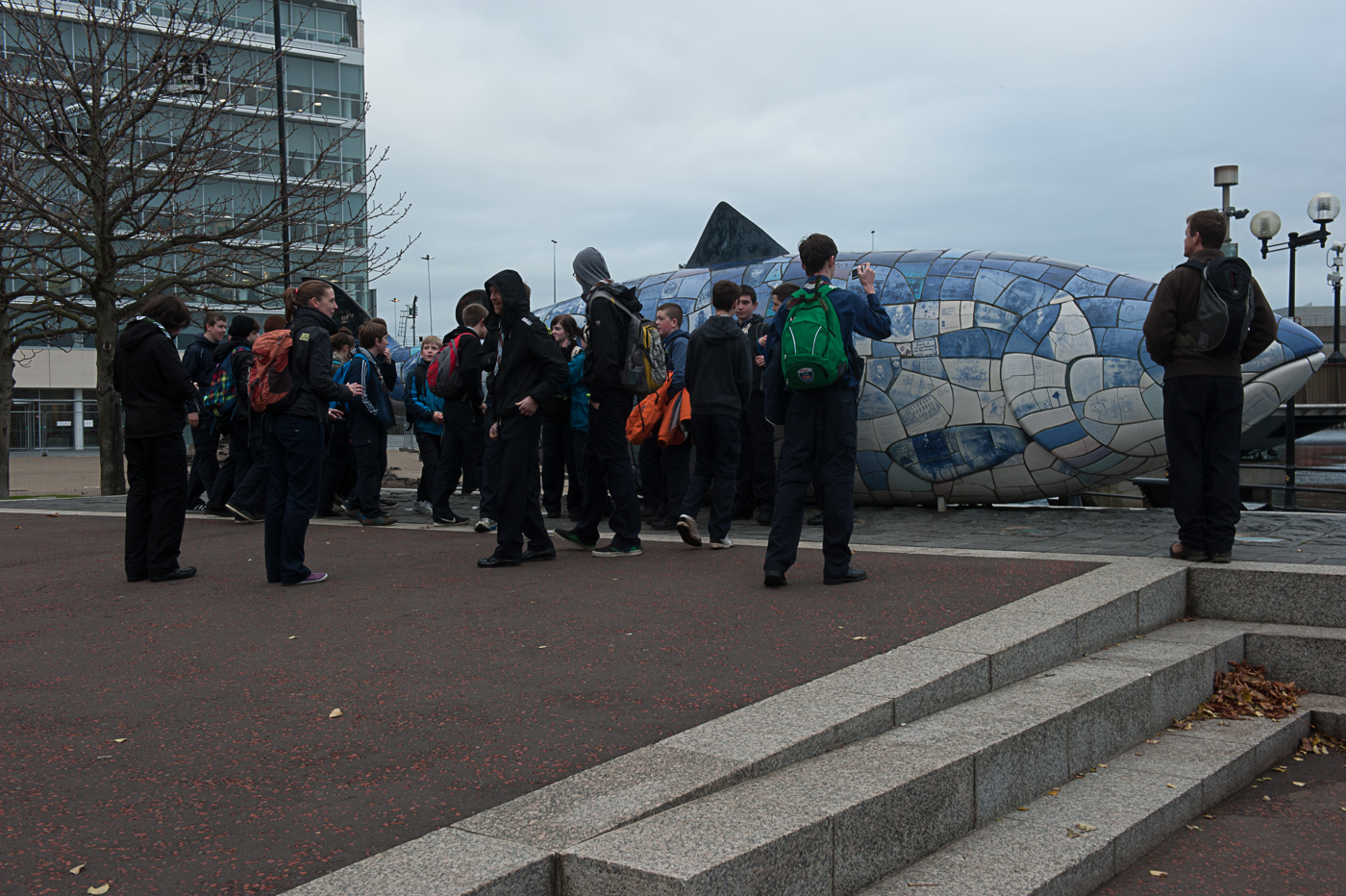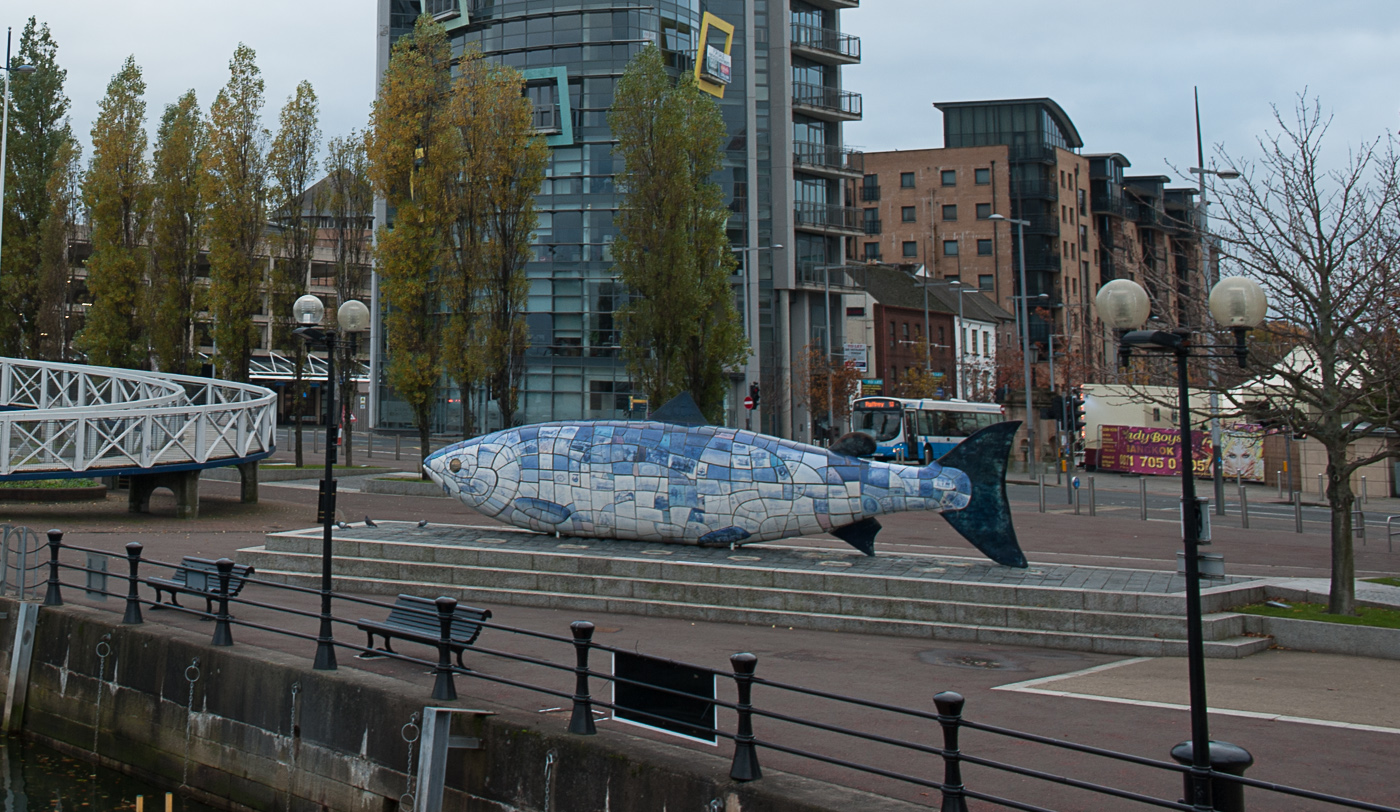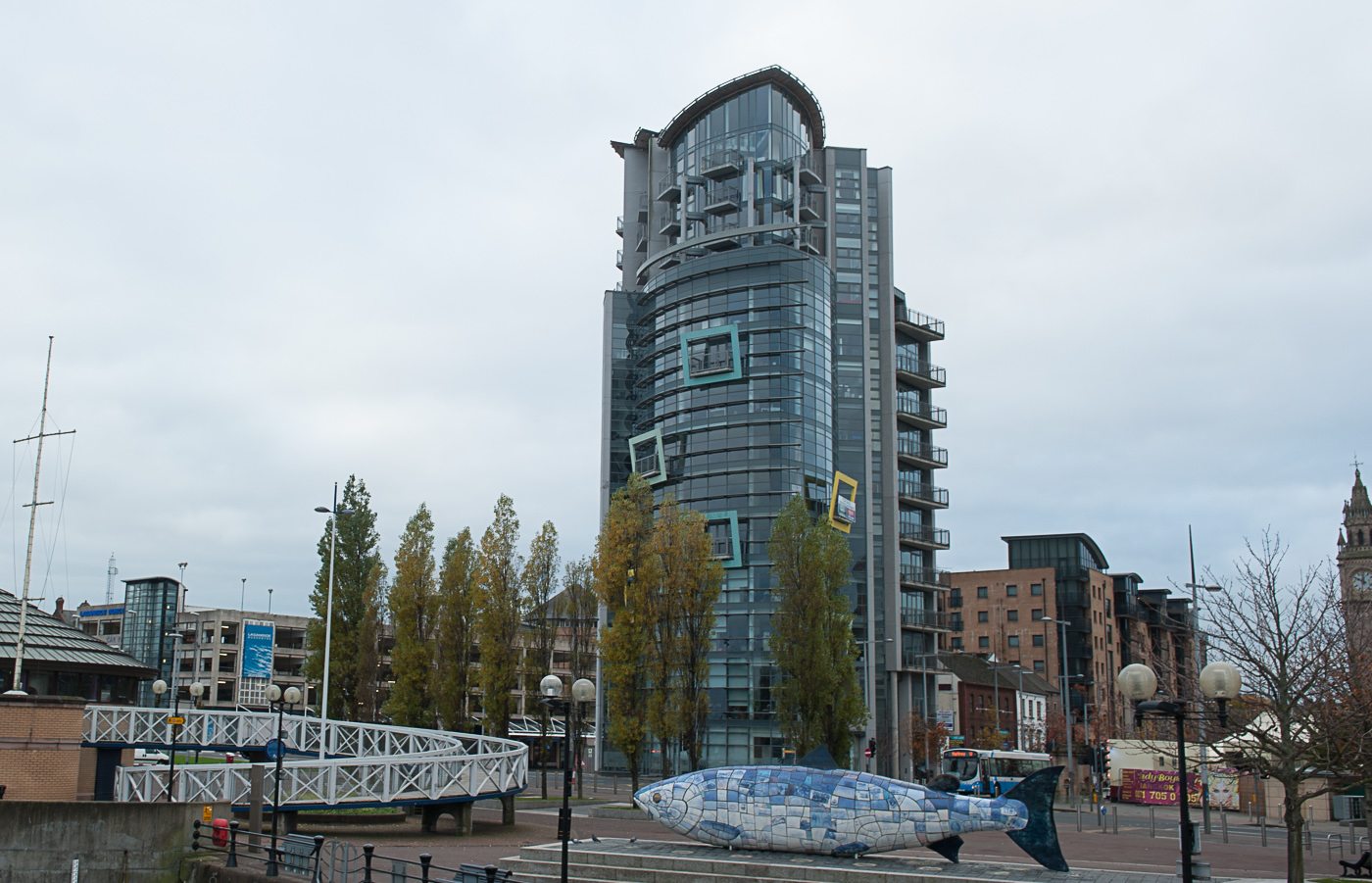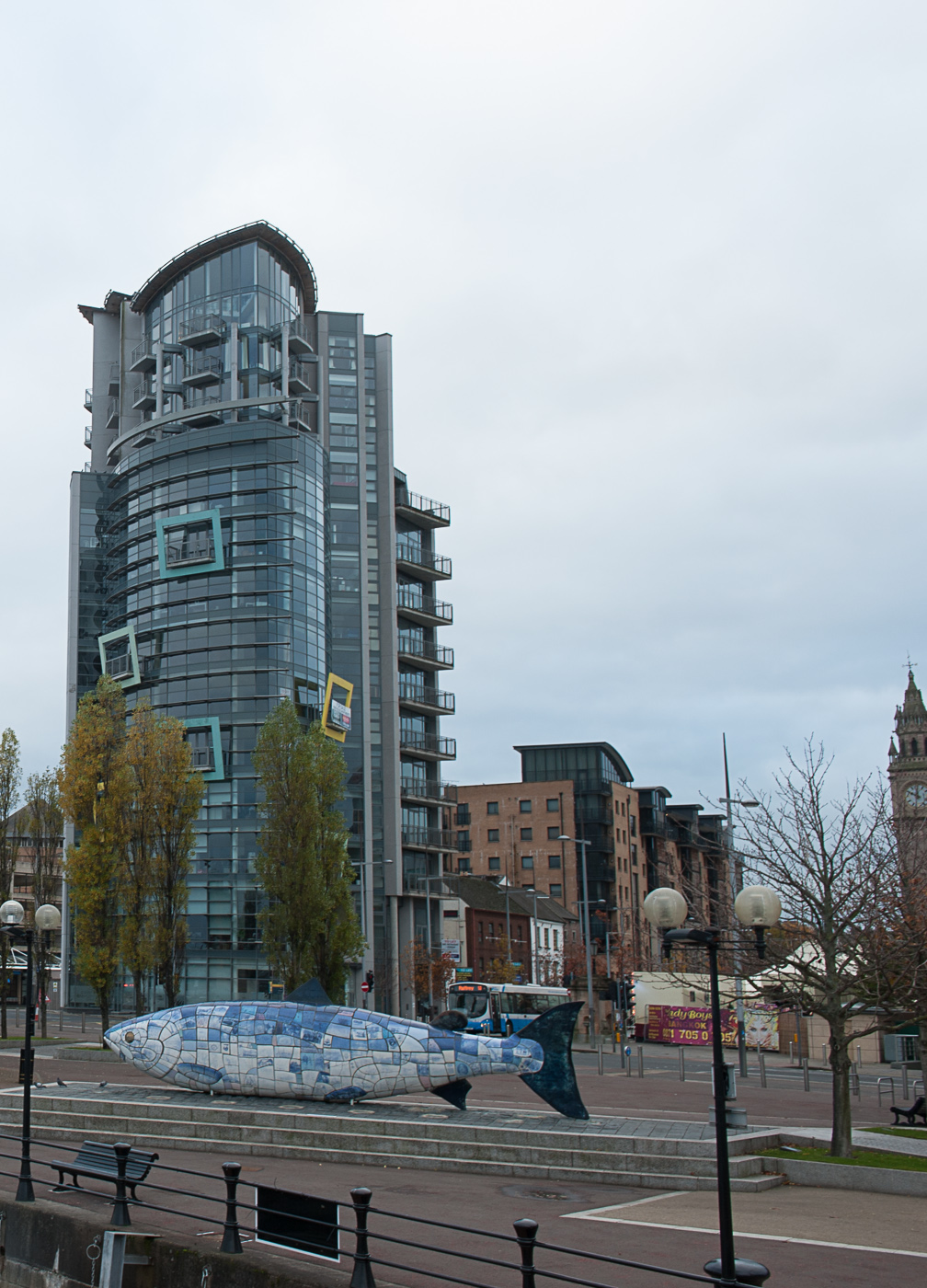I received some advice from my tutor suggesting that I should be more creative in my approach to the technical exercises. So with that in mind I headed into Belfast to find a more interesting subject for this exercise. I settled on the “Belfast big fish” as it met the requirements of the exercise (i.e. something clear in appearance and compact in shape and also accessible from close to and from a distance) whilst being aesthetically pleasing.
The first photograph below is unsurprisingly a shot of the fish, but with very little attention paid to composition or were the subject should be in the frame, essentially it’s a snapshot.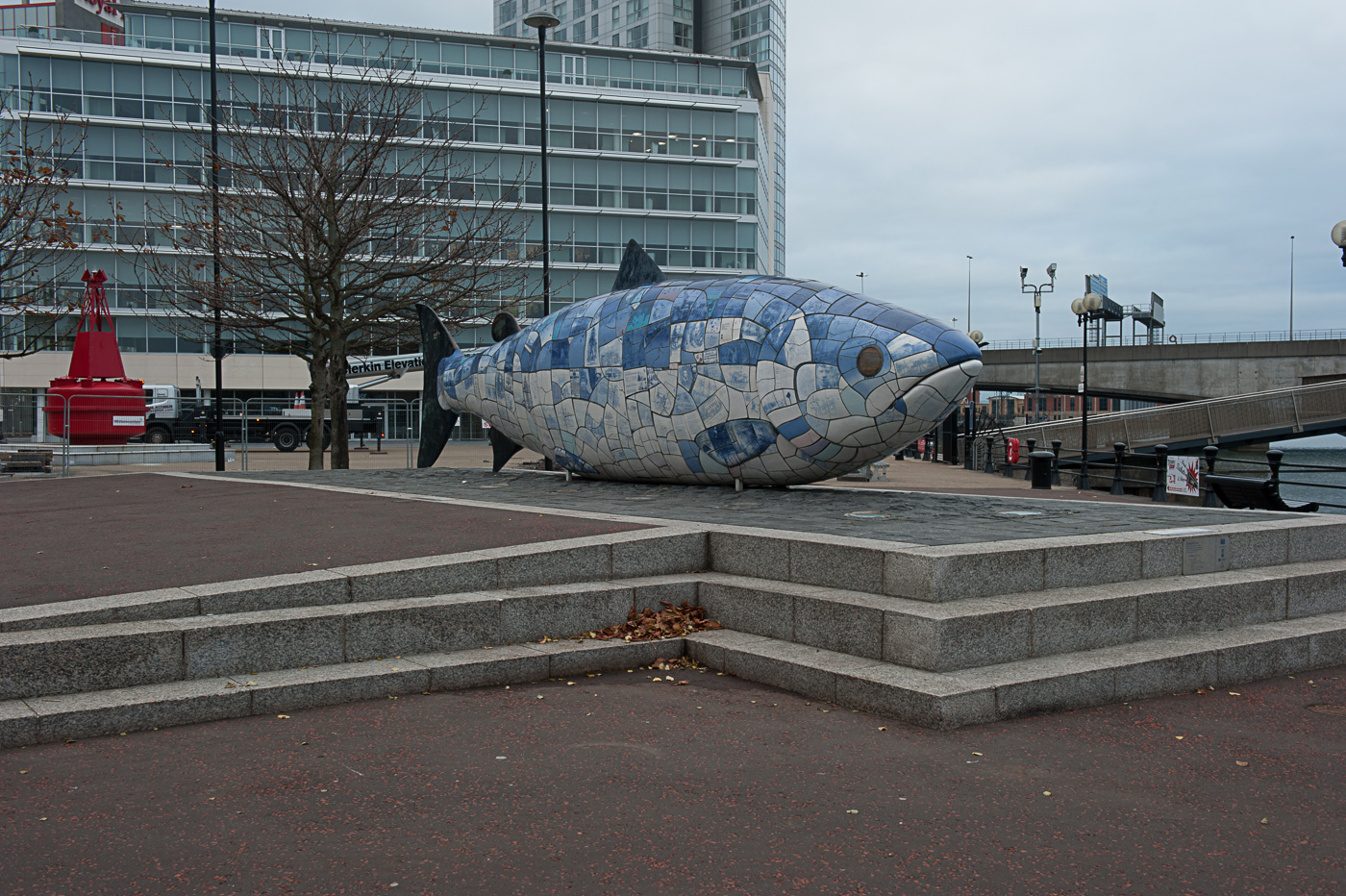
In the third photograph I have moved very close to the subject so that none of the edges are showing this has the effect, in this case, of masking the fact that the subject is a fish but shows the detail of the ceramic pieces that make up the scales of the fish.
In the second photograph I have filled the frame with the fish. I have tilted the camera to get as much of the fish in the frame as possible.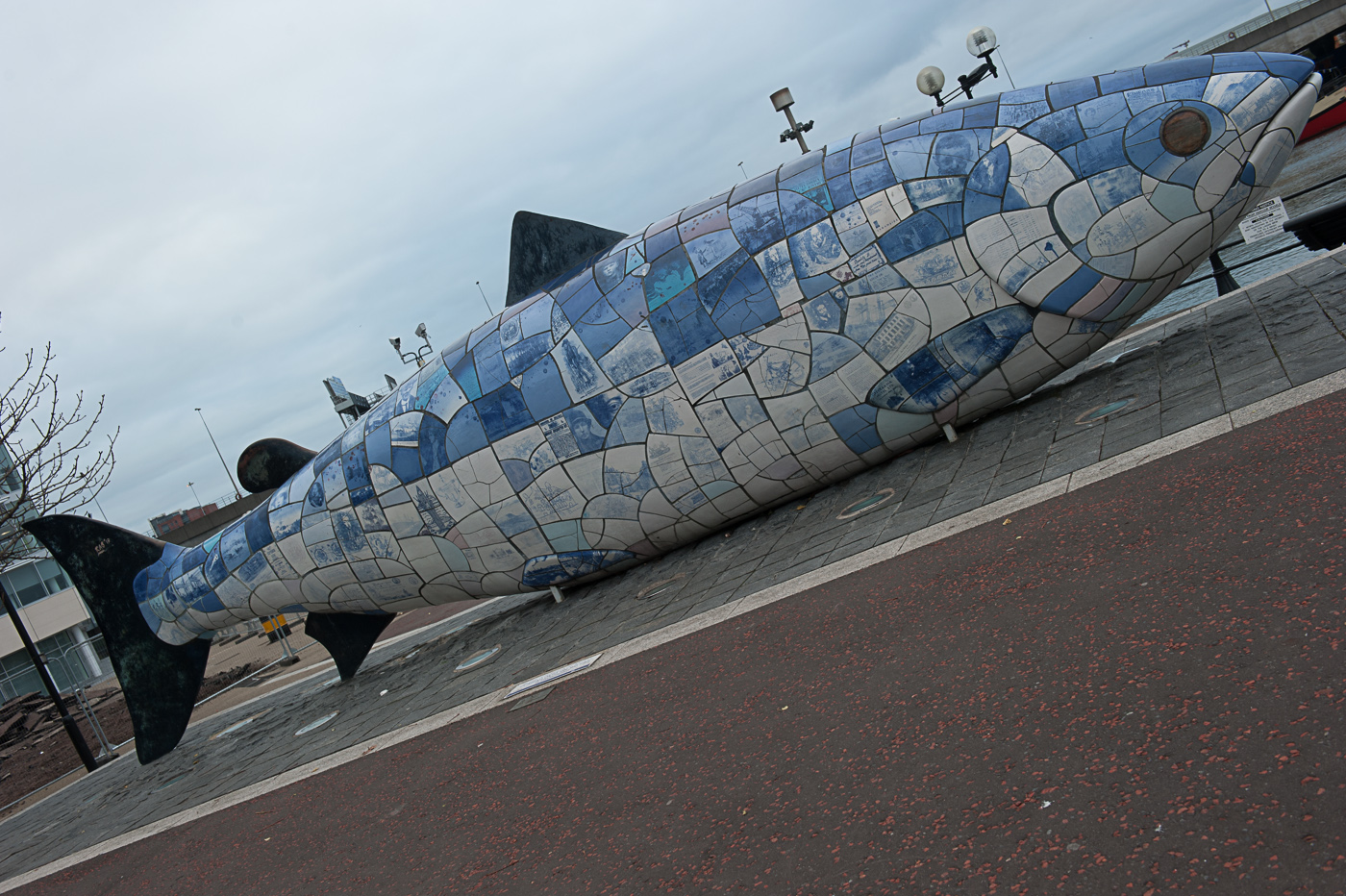
In the third photograph I have moved very close to the subject so that none of the edges are showing this has the effect, in this case, of masking the fact that the subject is a fish but shows the detail of the ceramic pieces that make up the scales of the fish.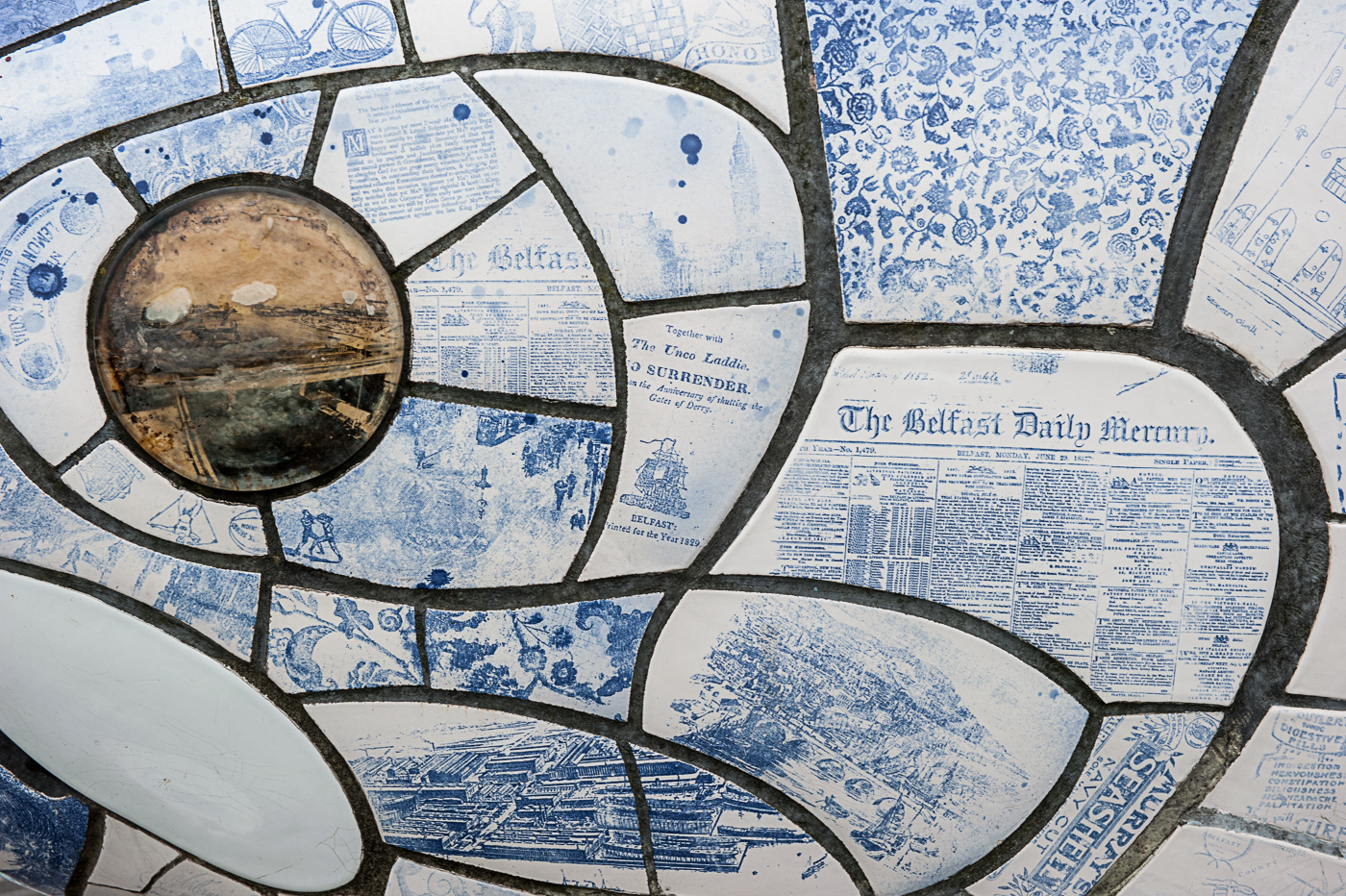
The fourth photograph shows the fish in relation to its surroundings. We can see that the fish is on a plan situated near the River Lagan beside the Lagan look out and overshadowed by all large brand-new commercial building.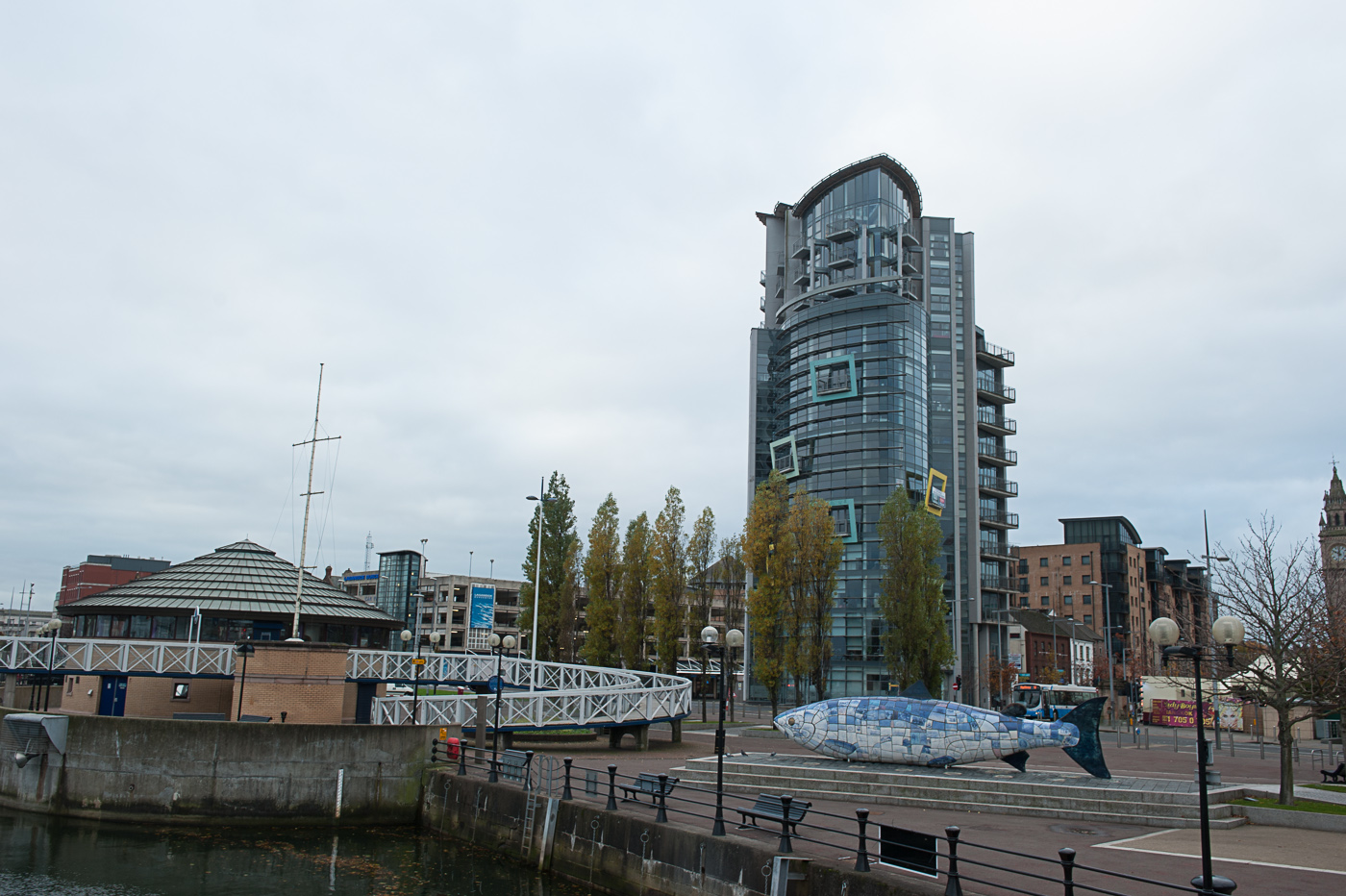
The final part of the exercise was to digitally crop the fourth image to produce new images of varying composition based on what the subject was in the frame, you can see the results below.
Reflection
What have I learned from this exercise? The most obvious thing is that composition matters. If we look at the first image although it is sharp, probably exposed, and shows the subject, it is not a good photograph. In these days of “scatter-gun digital photography” we take 1000 photographs to hopefully (and in many cases accidentally) get a good photograph and so a lot of people pay is little attention to composing the image beforehand.
Secondly I have learned that depending on the composition there are many many different photographs of any given subject. I recently attended a gallery showing the work of the Northern Irish painter William Scott. Scott’s choice of subject for his still life paintings were very limited but he managed through composition and other techniques to produce very varied work.
I have learned that context can affect a photograph. Images two and three give no real clue to were the photograph was taken and in the case of photograph three doesn’t even point to the fact that the photograph is of the large ceramic fish. My favourite photograph is the fourth image which shows the fish in context of its surroundings close to 3 Belfast landmarks.
The one major takeaway from this exercise is that it is well worth spending time planning the composition of the photograph and using the viewfinder frame to properly compose the image rather than run around taking 1000 shots and hoping that one of them will be a well composed photograph.
The final thing I learned is tourists don’t care if you’re taking photographs for your degree